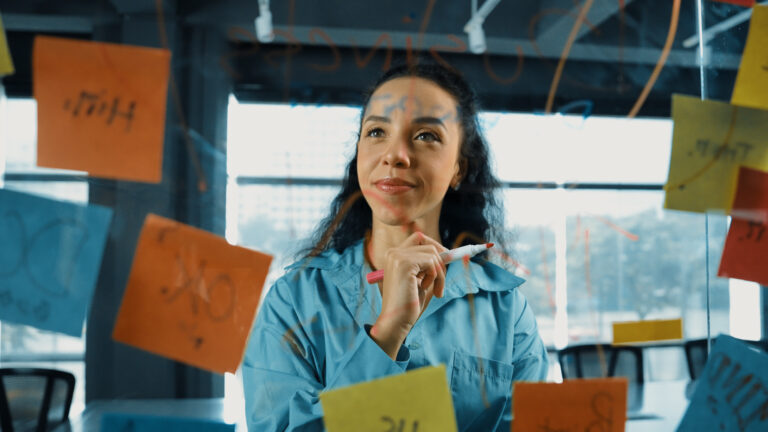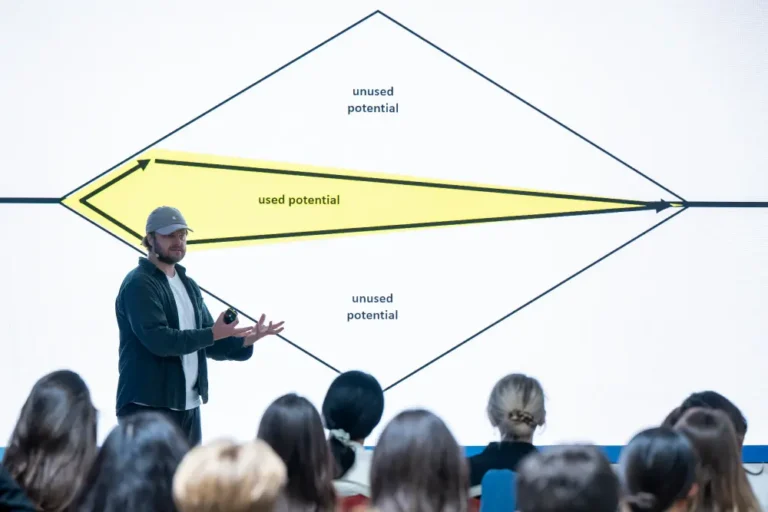Many people think of creativity as something joyful and liberating. Painting, writing, generating ideas – it all sounds like fun and freedom. But anyone who has ever faced a blank canvas, an empty document, or an open-ended challenge knows the other face of creativity: uncertainty, blocks, and sometimes even fear. Research has a name for this: Creative Anxiety.
Creative Anxiety describes the worry or fear people feel when they are asked to be creative. This phenomenon has been studied more intensively in recent years, including by Daker, Cortes, Lyons, and Green (2019), who showed how strongly fear can inhibit creative performance. Those who fear failure, worry about not having a good idea, or anticipate negative judgment from others tend to contribute fewer creative suggestions – or none at all.
Where Does the Fear of Creativity Come From?
The causes of Creative Anxiety are varied. One key factor is the uncertainty inherent in creative tasks. There is no single correct answer, no definitive solution. For many, this feels unfamiliar because school and the workplace are usually oriented toward clear results.
Another factor is social evaluation. Creative ideas make us vulnerable because they are often unconventional. Sharing an unusual idea exposes us to the risk of being laughed at or criticized. Studies show that people with higher evaluation anxiety struggle much more to generate creative contributions.
Perfectionism also plays a major role. Many block themselves with thoughts like, “If I don’t have the perfect idea, I’d rather say nothing.” As a result, creativity gets stifled at the very start.
The good news: Creative Anxiety can be reduced. In the Creativity Masterclass, you learn concrete methods that provide confidence and help you think more boldly. Leaders find the right tools in Leading for Creativity, a program that shows how to build psychological safety in teams – because the environment often determines whether creativity is blocked or unleashed.
The Paradox: Fear Blocks Exactly What We Need
The most paradoxical thing about Creative Anxiety is that it tends to arise precisely in situations where creativity is most needed – for example, when new solutions are urgently required. People then find themselves in a vicious cycle: the pressure to be creative creates fear, fear blocks creative thinking, and the absence of ideas increases the pressure.
Experiments have shown that individuals who suffer from strong Creative Anxiety generate fewer original ideas and feel less joy in the creative process. For them, creativity becomes not liberating but burdensome.
Real-Life Examples
A typical example is workplace brainstorming. Everyone sits in a room, and the facilitator says: “Now we need ten new ideas for our product.” Many participants remain silent. Not because they have no thoughts, but because they fear their ideas might be too trivial, too strange, or simply not good enough.
Creative Anxiety is also widespread in the arts. Writers talk about the “fear of the blank page,” musicians about the pressure to write the next hit. Even well-known figures like Maya Angelou or David Bowie have spoken openly about feeling they weren’t creative enough, despite their success.
How to Overcome Creative Anxiety
The good news is: Creative Anxiety is not a permanent condition – it can be changed. Researchers and practitioners have identified several approaches that help:
- Reduce the pressure
Instead of expecting brilliant ideas immediately, it helps to deliberately invest in “bad ideas.” A brainstorming session that begins with the rule, “First we collect the worst ideas,” lowers the fear of evaluation and makes room for real creativity. - Use routines and structures
Studies show that structure creates safety. Methods such as Design Thinking or creativity cards provide participants with a clear framework. This reduces the uncertainty that often triggers fear. - Strengthen psychological safety in teams
Especially in organizations, it is crucial that people don’t fear ridicule or devaluation. According to Harvard researcher Amy Edmondson, psychological safety is the foundation for open idea exchange. This is also where the Cultivator type comes in – the person who creates precisely this safe environment. - Take small steps
Instead of hoping for a big idea right away, it helps to start with small creative exercises. A daily “What if?” game or combining two random objects can gradually reduce the fear of creative work. - Train acceptance of uncertainty
Creativity always involves uncertainty. Those who learn to see uncertainty not as a threat but as a natural part of the process experience significantly less anxiety. This can be trained, for example through reflection exercises or mindfulness practices.
Why Talking About Creative Anxiety Matters
For a long time, Creative Anxiety was barely discussed. Creativity was assumed to automatically bring joy. Today, we know better: creative fears and blocks are widespread – not only among artists, but also among engineers, managers, and students.
By naming Creative Anxiety, we take away its power. It becomes clear: feeling uncertainty and fear in the creative process is completely normal. What matters is how we deal with it.
Conclusion
Creativity is not a smooth flow, but a process with highs and lows. Creative Anxiety shows us the shadow side of that process: the fear of mistakes, judgment, and uncertainty. But within that fear lies opportunity. By learning to understand and manage it, we open new spaces for bold ideas.
Research makes one thing clear: everyone can become more creative if they are willing to confront their blocks. Creative Anxiety is not a life sentence – it is a signal that we are venturing into uncertain territory. And it is precisely there that the best innovations often emerge.

